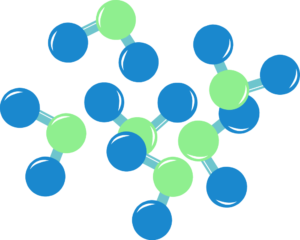
Sterilization
When facility hygiene experts refer to sterilization, we are referring to a high degree of disinfection that is used in settings where complete decontamination is necessary, such as surgical and medical facilities or gnotobiotic research facilities. “Sterilant” is a label claim regulated by the FDA, stating clearly that sterilization is defined as a “validated process used to render a product free of all forms of viable microorganisms”. As a result, all products with this label must meet strenuous standards by passing a series of tests. There are a number of means by which a facility can perform these “validated processes” to achieve a sterile environment, which includes both chemical and physical methods.
An accurate decontamination strategy is essential not only for your facility or research through environmental microorganisms, but also for the prevention of person-to-person transmission of dangerous pathogens. Let’s break down how sterilants can help your facility achieve complete decontamination.
From a chemical perspective, sterilants are a specific type of disinfecting agent, distinguished by an especially high degree of germicidal efficacy. Sterilants are used to kill all viable microorganisms whereas other disinfectants may have a weaker efficacy or only target specific pathogens. Sterilants differ from disinfectants primarily in strength of efficacy, killing nearly everything they make contact with, including both spores and microorganisms. It is important to note, however, that while sterilants eliminate all danger at the microscopic level, some of them can be toxic to humans and corrosive to materials and equipment in your facility.
Chlorine Dioxide
One example of a common chemical sterilant is chlorine dioxide. Chlorine dioxide can be deployed as a gas that allows it to spread to hard-to-reach areas such as nooks and crevices, which harbor dangerous pathogens. Quip Labs’ MB-10 tablets are a popular example of a handy chlorine dioxide solution.
In addition to chemical sterilants, some facilities utilize a variety of physical methods, rather than chemical means, to reach their decontamination needs. This usually involves applying extreme conditions that either kill or incapacitate harmful pathogens on surfaces and objects. These methods include applying extreme heat, pressure under steam, or radiation through UV light in order to eliminate harmful organisms. (Please note that the CDC does not recommend UV disinfection methods for preventing the spread of infectious diseases.)
Utilizing either or both methods properly is paramount to effective sanitation. Whichever route you decide is best for your facility, the most important thing is to follow procedure with care and caution so as to ensure the safety of your facility, your employees, and your research. Furthermore, improper sanitation can lead to the spread of the very pathogens and microorganisms your aim to eliminate. This can lead to costly waste in time and money for your facility. Whichever route you choose, contact your Quip Labs representative for a consultation into your facility’s specific needs. Quip Labs, simply and sensibly.

